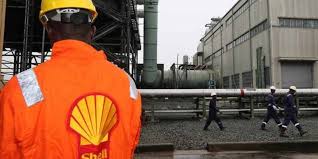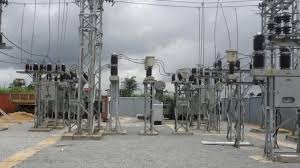Oil & Energy
Oil Prices Slide As US Dollar Strengthens
World oil prices plunged on Friday as traders took their cue from the strengthening United States dollar and eyed a crucial update on energy stockpiles in the United States, analysts said.
New York’s main futures contract, light sweet crude for delivery in March, fell 1.64 dollars to 73.64 dollars a barrel.
Brent North Sea crude for March delivery plunged 1.48 dollars to 72.64 dollars a barrel.
Oil sank after the European single currency fell close to a nine-month dollar low, as markets took a dim view of eurozone growth data and unclear EU proposals to help debt-ridden Greece.
In late morning London trade, the euro tumbled to 1.3532 dollars, the lowest level since last May 19. That compared with 1.3695 in New York late on Thursday.
A stronger dollar usually dampens demand for oil because it makes dollar-priced crude more expensive for buyers using weaker currencies.
EU leaders stopped short Thursday of offering a bailout to rescue eurozone member Greece. Deep problems in Greek public finances have highlighted the parlous debt of other crisis-hit countries such as Italy and Spain.
Investors also sought the safe-haven dollar after China ordered financial institutions to increase the amount of money they keep in reserve, as Beijing looked to rein in rampant lending amid fears of asset bubbles.
The development was an additional concern for the oil market because China is the world’s second biggest energy consuming nation after the United States.
Later Friday, traders will digest a key US inventories report for the week ending February 5. The report, usually published on Wednesdays, was delayed due to a snowstorm in the northeastern US.
This week, crude futures have edged higher as investors mulled the prospect of EU financial support for crisis-hit Greece — and as the US east coast experienced its second huge snowstorm in less than a week.
The International Energy Agency forecast on Thursday that world oil demand and prices would rise this year, driven higher by strong growth in emerging economies, revising upward its earlier forecasts.
The Paris-based agency said demand was now expected to be 86.5 million barrels per day in 2010 compared to a forecast last month of 86.3, while average prices will rise to 75 dollars per barrel from 58 in 2009.
Global daily demand is now estimated at 84.9 million barrels per day (mbd) in 2009, and thus the IEA is predicting a 1.6-mbd increase.
Demand growth is expected to come “entirely” from outside the Organisation for Economic Cooperation and Development (OECD), a grouping of 30 developed economies including Britain, France, Germany, Japan and the United States.
Oil & Energy
Nigeria Loses More Crude Oil Than Some OPEC Members – Nwoko

Nigeria’s losses due to crude oil theft has been said to be more significant than those of some other members of the Organisation of Petroleum Exporting Countries(OPEC).
The Chairman, Senate Ad- hoc Committee on Crude Oil Theft, Senator Ned Nwoko, made this known in an interview with newsmen in Abuja.
Nwoko noted with dismay the detrimental impact of the issue, which, he said include economic damage, environmental destruction, and its impact on host communities.
According to him, the theft was not only weakening the Naira, but also depriving the nation of vital revenue needed for infrastructure, healthcare, education and social development.
The Senator representing Delta North Senatorial District described the scale of the theft as staggering, with reports indicating losses of over 200,000 barrels per day.
Nwoko disclosed that the ad hoc committee on Crude Oil Theft, which he chairs, recently had a two-day public hearing on the rampant theft of crude oil through illegal bunkering, pipeline vandalism, and the systemic gaps in the regulation and surveillance of the nation’s petroleum resources.
According to him, the public hearing was a pivotal step in addressing one of the most pressing challenges facing the nation.
‘’Nigeria loses billions of dollars annually to crude oil theft. This is severely undermining our economy, weakening the Naira and depriving the nation of vital revenue needed for infrastructure, healthcare, education, and social development.
‘’The scale of this theft is staggering, with reports indicating losses of over 200,000 barrels per day more than some OPEC member nations produce.
‘’This criminal enterprise fuels corruption, funds illegal activities and devastates our environment through spills and pollution.
‘’The public hearing was not just another talk shop; it was a decisive platform to uncover the root causes of crude oil theft, bunkering and pipeline vandalism.
‘’It was a platform to evaluate the effectiveness of existing surveillance, monitoring, and enforcement mechanisms; Identify regulatory and legislative gaps that enable these crimes to thrive.
‘’It was also to engage stakeholders, security agencies, host communities, oil companies, regulators, and experts to proffer actionable solutions; and strengthen legal frameworks to ensure stricter penalties and more efficient prosecution of offenders”, he said.
Nwoko noted that Nigeria’s survival depended
Oil & Energy
Tap Into Offshore Oil, Gas Opportunities, SNEPCO Urges Companies

Shell Nigeria Exploration and Production Company Ltd. (SNEPCo) has called on Nigerian companies to position themselves strategically to take full advantage of the growing opportunities in upcoming offshore and shallow water oil and gas projects.
The Managing Director, SNEPCO, Ronald Adams, made the call at the 5th Nigerian Oil and Gas Opportunity Fair (NOGOF) Conference, held in Yenagoa, Bayelsa State, last Thursday.
Adams highlighted the major projects, including Bonga Southwest Aparo, Bonga North, and the Bonga Main Life Extension, as key areas where Nigerian businesses can grow their capacity and increase their involvement.
“Shell Nigeria Exploration and Production Company Ltd. (SNEPCo) says Nigerian companies have a lot to benefit if they are prepared to take advantage of more opportunities in its offshore and shallow water oil and gas projects.
“Projects such as Bonga Southwest Aparo, Bonga North and Bonga Main Life Extension could grow Nigerian businesses and improve their expertise if they applied themselves seriously to executing higher value contracts”, Adams stated.
Adams noted that SNEPCo pioneered Nigeria’s deepwater oil exploration with the Bonga development and has since played a key role in growing local industry capacity.
He emphasized that Nigerian businesses could expand in key areas like logistics, drilling, and the construction of vital equipment such as subsea systems, mooring units, and gas processing facilities.
The SNEPCO boss explained that since production began at the Bonga field in 2005, SNEPCo has worked closely with Nigerian contractors to build systems and develop a skilled workforce capable of delivering projects safely, on time, and within budget both in Nigeria and across West Africa.
According to him, this long-term support has enabled local firms to take on key roles in managing the Bonga Floating, Production, Storage and Offloading (FPSO) vessel, which reached a major milestone by producing its one-billion barrel of oil on February 3, 2023.
Oil & Energy
Administrator Assures Community Of Improved Power Supply

The Emohua Local Government Area Administrator, Franklin Ajinwo, has pledged to improve electricity distribution in Oduoha Ogbakiri and its environs.
Ajinwo made the pledge recently while playing host in a courtesy visit to the Oduoha Ogbakiri Wezina Council of Chiefs, in his office in Rumuakunde.
He stated that arrangements are underway to enhance available power, reduce frequent outages, and promote steady electricity supply.
The move, he said, was aimed at boosting small and medium-scale businesses in the area.
“The essence of power is not just to have light at night. It’s for those who can use it to enhance their businesses”, he said.
The Administrator, who commended the peaceful nature of Ogbakiri people, urged the Chiefs to continue in promoting peace and stability, saying “meaningful development can only thrive in a peaceful environment”.
He also charged the Chiefs to protect existing infrastructure while promising to address the challenges faced by the community.
Earlier, the Oduoha Ogbakiri Wezina Council of Chiefs, led by HRH Eze Goodluck Mekwa Eleni Ekenta XV, expressed gratitude to the Administrator over his appointment and pledged their support to his administration.
The chiefs highlighted challenges facing the community to include incessant power outage, need for new transformers, and the completion of Community Secondary School, Oduoha.
The visit underscored the community’s expectations from the LGA administration.
With Ajinwo’s assurance of enhancing electricity distribution and promoting development, the people of Oduoha Ogbakiri said they look forward to a brighter future.
By: King Onunwor
-
Rivers5 days ago
Four Internet Fraudstars Get Different Jail Terms In PH
-
Opinion5 days ago
Restoring Order, Delivering Good Governance
-
Business5 days ago
PH Women Plan Alternative Stew, Shun Tomato High Prices
-
Sports5 days ago
Nigerian Athletes Serving Doping Bans
-

 Niger Delta5 days ago
Niger Delta5 days agoNDLEA Intercepts 584.171kg Hard Drugs In Bayelsa … Arrests 559 Suspects
-
News5 days ago
Tinubu Never Stopped 5-year Visa For U S. Citizens – Presidency ?
-
Business5 days ago
Food Security: NDDC Pays Counterpart Fund For LIFE-ND Project
-
Business5 days ago
Industry Leaders Defend Local Content, … Rally Behind NCDMB

